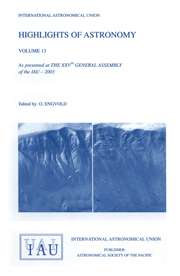Article contents
The Absolute Magnitude of the Early-Type MK Standards From Hipparcos Parallaxes
Published online by Cambridge University Press: 14 August 2015
Extract
We have analysed the standards of the MK system in the B0-F5 spectral region with the help of Hipparcos parallaxes, using only stars for which the error on the absolute magnitude is ≤ 0.3 mag. The sample stars (about one hundred) were scrutinized for companions and for interstellar extinction. We find that the main sequence is a wide band and that, although in general giants and dwarfs have different absolute magnitudes, the separation between luminosity class V and III is not clear. We conclude that there is no strict relation between luminosity class and absolute magnitude. The relation is only a statistical one and has a large intrinsic dispersion.
We have analysed similarly the system of standards defined by Garrison and Gray (1994) separating low and high rotational velocity standards. We find similar effects as in the original MK system.
Information
- Type
- II. Joint Discussions
- Information
- Copyright
- Copyright © Kluwer 1998
References
- 2
- Cited by

